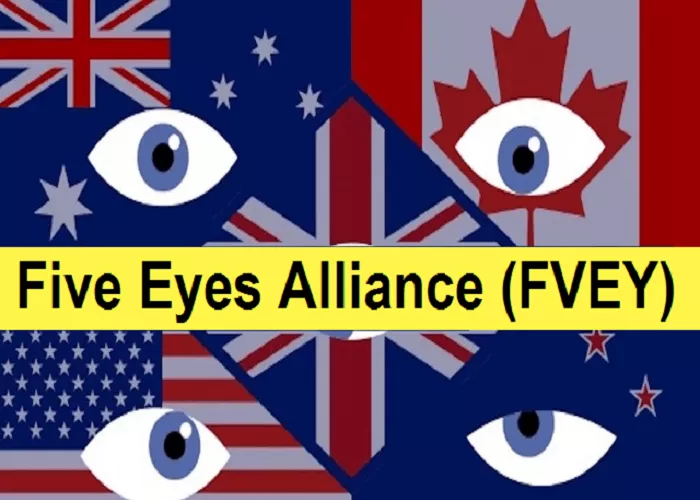The Five Eyes (FVEY) is an intelligence alliance comprising five English-speaking countries: Australia, Canada, New Zealand, the United Kingdom, and the United States. Established during World War II, this alliance facilitates extensive cooperation in signals intelligence (SIGINT) among its members. Over the years, the Five Eyes has evolved into one of the world’s most comprehensive espionage alliances, adapting to new challenges such as cyber threats and international terrorism.
Historical Background
The origins of the Five Eyes can be traced back to the Atlantic Charter of 1941 and the subsequent BRUSA Agreement in 1943 between the United Kingdom and the United States. These agreements laid the foundation for the UKUSA Agreement signed in 1946, which formalized the intelligence-sharing partnership. Canada joined the alliance in 1948, followed by Australia and New Zealand in 1956, completing the Five Eyes.
Member Countries and Their Roles
United States
As a founding member, the United States plays a pivotal role in the alliance. The National Security Agency (NSA) is responsible for collecting and analyzing signals intelligence. The U.S. focuses on regions including the Middle East, Russia, China, the Caribbean, and Africa.
United Kingdom
The UK’s Government Communications Headquarters (GCHQ) handles intelligence operations, concentrating on Europe, European Russia, the Middle East, and Hong Kong. The UK was instrumental in the formation of the alliance and continues to be a key player.
Canada
Canada’s Communications Security Establishment (CSE) manages intelligence gathering, with a focus on monitoring the Russian and Chinese interior and overseeing assets in Latin America. Canada’s geographical proximity to the Soviet Union during the Cold War provided significant eavesdropping advantages.
Australia
The Australian Signals Directorate (ASD) is responsible for intelligence operations, particularly in South Asia and East Asia. Australia’s strategic location allows it to monitor communications in these regions effectively.
New Zealand
New Zealand’s Government Communications Security Bureau (GCSB) focuses on Southeast Asia and the western Pacific. It maintains listening posts in the South Island at Waihopai Valley and on the North Island at Tangimoana.
Functions and Operations
The Five Eyes alliance primarily engages in signals intelligence (SIGINT), which involves intercepting and analyzing electronic communications. Over time, the alliance has expanded its scope to include military intelligence (MILINT), human intelligence (HUMINT), and geospatial intelligence (GEOINT). The collaboration enables member countries to share intelligence, coordinate surveillance activities, and enhance their collective security.
Oversight and Accountability
To ensure that intelligence activities adhere to legal and ethical standards, the Five Eyes alliance has established oversight bodies. The Five Eyes Intelligence Oversight and Review Council (FIORC) comprises non-political entities from each member country, including:
- The Office of the Inspector-General of Intelligence and Security of Australia
- The National Security and Intelligence Review Agency of Canada
- The Office of the Intelligence Commissioner of Canada
- The Commissioner of Intelligence Warrants and the Office of the Inspector-General of Intelligence and Security of New Zealand
- The Investigatory Powers Commissioner’s Office of the United Kingdom
- The Office of the Inspector General of the Intelligence Community of the United States
Expansion: Nine Eyes and Fourteen Eyes
Beyond the Five Eyes, there are extended alliances known as the Nine Eyes and Fourteen Eyes. The Nine Eyes includes the Five Eyes countries plus Denmark, France, the Netherlands, and Norway. The Fourteen Eyes further adds Germany, Belgium, Italy, Spain, and Sweden to the Nine Eyes group. These alliances facilitate broader intelligence sharing but with varying levels of access and cooperation.
Controversies and Criticisms
The Five Eyes alliance has faced scrutiny over its surveillance practices, particularly concerning privacy and civil liberties. Revelations by former NSA contractor Edward Snowden highlighted the extent of global surveillance conducted by the alliance, sparking debates and legal challenges. Critics argue that the alliance operates with a lack of transparency and accountability, raising concerns about the potential for abuse of power.
Conclusion
The Five Eyes alliance represents a longstanding and robust partnership among five nations committed to intelligence sharing and collective security. While it has adapted to address modern threats such as cyberattacks and terrorism, the alliance continues to navigate challenges related to privacy, oversight, and international cooperation. Understanding the structure and functions of the Five Eyes provides insight into the complexities of global intelligence operations and the balance between security and civil liberties.


